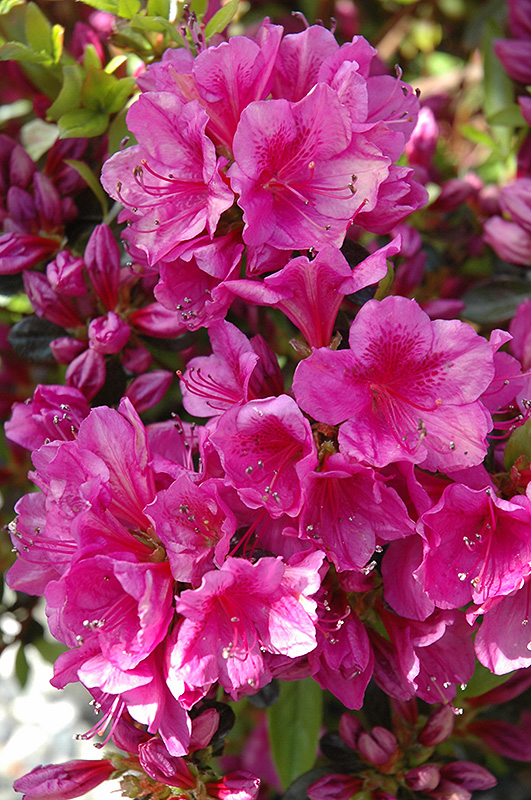Azalea, Girard's Purple Rhododendron 'Girard's Purple' Height: 3 feet Spread: 3 feet
Sunlight:
Hardiness Zone: 5a Description: Vivid purple blooms with scarlet spots cover this compact, vigorous azalea in mid-spring; dark green glossy foliage emerges light green-yellow; needs highly acidic and organic soil that is well drained Ornamental Features Azalea, Girard's Purple is covered in stunning clusters of purple trumpet-shaped flowers with scarlet spots at the ends of the branches in mid spring. It has dark green evergreen foliage which emerges light green in spring. The glossy narrow leaves remain dark green throughout the winter. Landscape Attributes Azalea, Girard's Purple is an open multi-stemmed evergreen shrub with an upright spreading habit of growth. Its relatively coarse texture can be used to stand it apart from other landscape plants with finer foliage. This is a relatively low maintenance shrub, and should only be pruned after flowering to avoid removing any of the current season's flowers. It has no significant negative characteristics. Azalea, Girard's Purple is recommended for the following landscape applications; Planting & Growing Azalea, Girard's Purple will grow to be about 3 feet tall at maturity, with a spread of 3 feet. It tends to be a little leggy, with a typical clearance of 1 foot from the ground. It grows at a slow rate, and under ideal conditions can be expected to live for 40 years or more. This shrub does best in partial shade to shade. It does best in average to evenly moist conditions, but will not tolerate standing water. This plant should be periodically fertilized throughout the active growing season with a specially-formulated acidic fertilizer. It is very fussy about its soil conditions and must have rich, acidic soils to ensure success, and is subject to chlorosis (yellowing) of the foliage in alkaline soils. It is somewhat tolerant of urban pollution, and will benefit from being planted in a relatively sheltered location. Consider applying a thick mulch around the root zone in winter to protect it in exposed locations or colder microclimates. This particular variety is an interspecific hybrid.![]()
![]()
![]()
![]()
![]()
![]()
![]()
![]()
![]()
![]()
![]()
![]()

